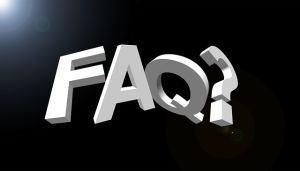Understanding The Service Quality Gap Model
 The Service Quality Gap Model is a broad model that describes the barriers that companies face in the real world in terms of providing service perceived as high quality.
The Service Quality Gap Model is a broad model that describes the barriers that companies face in the real world in terms of providing service perceived as high quality.
It should not be confused with The Gaps Model of Customer Satisfaction, which sounds similar but is quite different.
There are a number of different versions of the service gap model.
Five Gaps Or Discrepancies
The model describes five gaps or discrepancies that interfere with management’s ability to develop strategies to improve customer service.
The Knowledge Gap : Managers Vs. Customer Perceptions
Gap one involves differing perceptions about what customers want or expect. Managers believe that they understand what their customers want, but there is often a gap — errors in their understanding. In other words managers make decisions based on faulty information about what customers expect.
The Standards Gap
The standards gap again pertains to differing perceptions and interpretations between managers/decision makers and customers. We can define it as:
The difference between management’s perceptions of customer expectations and the quality standards established for service delivery.
So for example, management may set standards or goals for their customer service actions (e.g. wait time), but there is often a gap between those standards, and what customers expect. In part this is because decisions about customer service actions are made on the basis of many factors that have nothing to do with the customer — i.e. available resources, costs, bottom line, philosophy, etc.
The Delivery Gap:
The delivery gap refers to the difference between the standards a company sets regarding service, and the actual implemented results. So, for example, management may set a wait time at the cash of two minutes, but in fact, when implemented, the actual customer wait time can be as long as 15 minutes.
In other words its a failure of implementation, and this can be caused by many factors, including misunderstanding work loads, over-estimating staff ability, etc.
The Internal Communication Gap:
We can define this as:
The difference between what the company¶s advertising and sales personnel think are the products, features, performance, and service quality level and what the company is actually able to deliver.
The easiest way to understand this is to think of the situation where a company OVER promises, and under-delivers. What it tells customers sets up expectations that are not meant when the customer interacts with the products or services. That creates frustrated expectations and anger.
The Perception Gap
We can define this gap as:
The difference between what is, in fact, delivered and what customers perceive they received.
The fact that a company delivers service to a customer in a particular way does not necessarily mean that the customer will perceive that is what he or she received.
The customer does no have or apply a rigid standard to assess the service received. In fact, it can change due to context, customer circumstance, even to the point where something a company does would be perfectly fine in one situation, but totally unacceptable in another situation, even with the same customer.
In short, it’s impossible to control customer perceptions.

